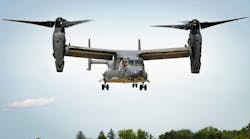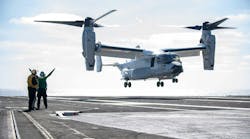FORT WORTH, TX – As the nights get longer and the blue skies fade to a wintry grey, flight skills and experience become more important factors for safe helicopter operations. Six years of safety data compiled by the United States Helicopter Safety Team (www.USHST.org) shows that more than half of all civil helicopter accidents occurring at night involve pilots with less than 100 hours of night flight experience. In addition, pilots with less than 500 hours of night operations experience are involved in 78 percent of nighttime accidents.
The USHST analyzed information from 938 U.S. helicopter accidents during six years (2000, 2001, 2006, 2009, 2010, 2011) and saw a trend that was somewhat expected, but had not previously been scrutinized. The data is listed below:
(“Other Operations” do not include emergency medical service, firefighting or law enforcement missions.)
Other Operations Emergency Operations
Nighttime Experience # of Accidents Percentage # of Accidents Percentage
0-99 night hours 21 53% 4 9%
100-499 night hours 10 25% 16 36%
500 + night hours 9 23% 24 55%
For non-emergency operations, less nighttime experience equals more accidents, but the trend flips for nighttime accidents within the realm of emergency operations. However, in large part, this is due to the fact that most pilots flying these emergency missions have accumulated a lot of night flight experience and they are frequently flying in challenging conditions. But the data also illustrates that even the most experienced pilots have accidents in nighttime conditions.
In addition, a closer look at the analysis in the following chart shows that private/personal flying and instructional operations are especially susceptible to accidents at night.
Private Operations Instructional Operations
Nighttime Experience # of Accidents Percentage # of Accidents Percentage
0-99 night hours 10 83% 6 100%
100-499 night hours 2 17% 0 0%
500 + night hours 0 0% 0 0%
Although it is a small sample size, the trend shows that pilots on night flights, especially less experienced pilots, need to take every precaution in order to ensure their safety and the safety of their passengers.
Two IHST Safety Bulletins: “Inadvertent Entry into Cloud or Fog” and “Visibility: The Minimum You Should Know,” offer helpful information to helicopter pilots regarding visibility issues. (http://www.ihst.org/Default.aspx?tabid=3089&language=en-US)
The USHST and the International Helicopter Safety Team (IHST) promote safety and work to reduce accidents. The IHST organization was formed in 2006 to lead a government and industry cooperative effort to address factors that were affecting an unacceptable helicopter accident rate.
Prior to 2006, the number of worldwide civil helicopter accidents was rising at a rate of 2.5 percent per year. Since 2006, the number of accidents worldwide has been decreasing by an annual rate of 2 percent.
More information about the IHST, its reports, safety tools, and presentations from its 2014 safety symposium can be obtained at its web site at www.IHST.org and on the IHST Facebook page.



